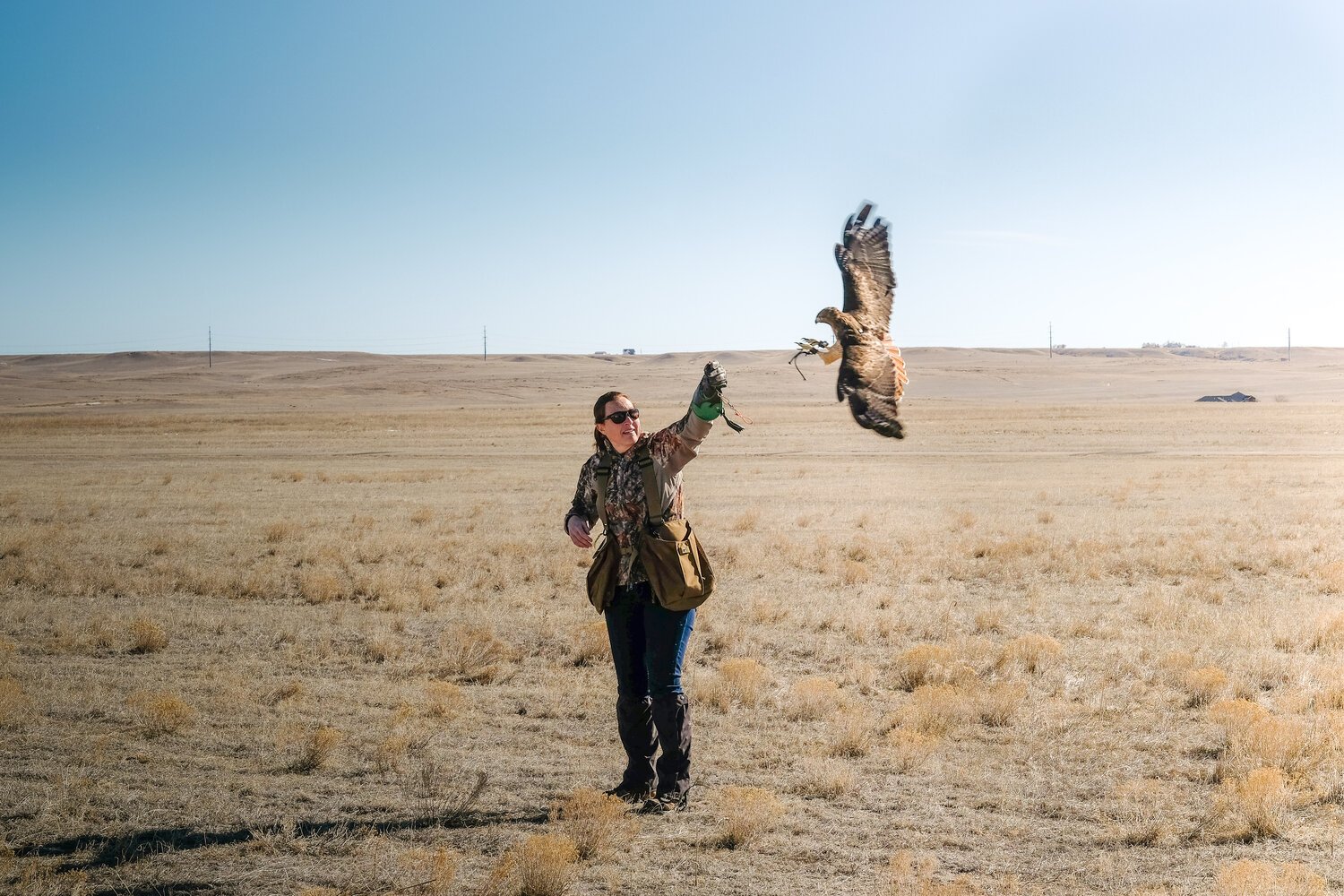Karen Green :: Falconer
Before spending the day with Karen Green and her three raptors in Northern Colorado, my experience with birds of prey was limited to a 30-minute tourist presentation outside of Vancouver, Canada. But after learning that Colorado has a large and active hawking club, I reached out to Karen to see if she would be willing to let me photograph her and her birds in action.
I couldn’t have asked for a better field guide. Karen has officially been a falconer for a little over three years, but has worked with animals her entire life. (She currently works as the executive director of the Zoological Discovery Center in Littleton.) Every time I asked a question, which was about every four minutes, Karen was ready with a long and informative answer.
What does it take to be a falconer? Short answer: A lot. Long answer: A minimum two-year commitment; an in-depth study of bird health, care, and regulations; passing a 100-question exam issued by Colorado Parks and Wildlife; and a sponsor willing to mentor you during a multi-season apprenticeship.
How do you obtain a bird? Licensed falconers may opt for a captive bred bird, but many falconers prefer trapping a bird in the wild. The latter comes with a set of strict state regulations. And despite the negative connotations of the term “trapping,” studies show that only about 20% of wild raptors survive their first winter, so capturing a hawk actually helps ensure the animal’s survival.
How long do raptors live? For a Red-tailed hawk, typically 15 to 20 years in captivity.
How exactly do you train a bird? It’s all about weight management. You want to keep the birds healthy, but just a little bit hungry.
As I mentioned… SO MANY QUESTIONS.
I’ll spare you my entire inquisition because Karen and the passion she has for her birds and this ancient sport were the real highlights of this excursion. Here she is with Stryker, her Red-tailed hawk; Havok, her Harris hawk; and Magneto, her American kestrel, the smallest falcon breed in North America.
Our day included several high speed chases, as well as time spent trying to shoo cottontails and jackrabbits out of their hiding places after they’d been spotted. There was also a pit stop to chat with two gentlemen who showed up as we were moving to a new hunting ground. Karen welcomed them with patience and grace. She considers sharing insight and educating people about falconry a part of her “job” and a boon for the sport overall. Ultimately, Stryker and Havok struck out during our time hunting together. Their tenacity, even when paired with Karen’s leadership, didn’t result in any kills, a testament to how difficult it is for raptors to feed themselves in the wild. However, Magneto was in the mood for quarry… and ended the day with six mice.
For more information about falconry in Colorado, visit the Colorado Hawking Club.
###

















